Matador Network's Blog, page 10
September 17, 2025
Wine Country 2 Ways: Find Your Style at These Sonoma County Sister Properties

If you can believe it, I grew up in Southern California and went to college in the Bay Area but never made my way to Sonoma County for wine tastings. A few years back, I ventured on a weekend getaway to Temecula in the Greater Los Angeles Area and got a feel for what I imagined wine country would be like, but I didn’t really have an excuse to go — until recently, when I found myself staying at two very different properties in Sonoma County: a boutique hotel in downtown Healdsburg and a wellness-oriented retreat in nearby Forestville.
For a boutique experience with a big personality: 27 North
Photos: Christina Berke
My journey to Sonoma County started with a short plane ride from Los Angeles to Santa Rosa. I was picked up by 27 North’s Oliver in a Volvo SUV with a panoramic sunroof for a short and scenic ride to Healdsburg, complete with wild turkeys and bursting vineyards. There’s a bookish warmth you feel when you walk into the hotel, and I was pleased with the welcome drink, a hibiscus tea with (or without) the housemade tequila, El Mexicano.
Though my journey wasn’t long, travel days can still take something out of me. The second I got settled into my room, I sank into the fluffiest bed, almost as if it sighed along with me. I kicked off my shoes, turned on the gas fireplace with a flick of a switch, and flipped through the local SF Modern Luxury magazine while I enjoyed a cup of local Russian River Tea Company tea.
My room was spacious — bigger than the apartment I lived in years ago in New York. I loved the 19th-century antique armoire, the faux balcony windows, and the extravagant four-poster bedframe. The attention to detail was incredible, like the well-appointed mirrors featuring tiny birds, flowers, and butterflies that gave it a lightly feminine touch.
If you must work from your room, you can feel fancy sitting at the leather-top desk with vintage books held together by bronze lions. The hotel’s L’Occitane bath products finish off the elegance, along with homemade lavender bath salts. Soak in the jet tub and enjoy the view — in my case, local art from Terry Sauvé that delivered a gorgeous setting sun overlooking the vineyards. In fact, the hotel is filled with art from other locals, like Bradford Brenner’s lulling florals and Berisford’s modern It’s-It ice cream pieces.
Luckily, I didn’t have to grab a Lyft to get dinner as the property has a restaurant, Arandas, right downstairs. Wednesday night is Rock Like a Banshee — bring your own collection of records, or listen to the DJ spin some classics while you enjoy happy hour with a Savoia Spritz Slushie to cool off or the prickly pear margarita. Happy hour (Thursday and Friday between 4 and 6 PM and Saturday and Sunday between 3 and 6 PM) offers classic margs for $5 each plus light bites like queso fundido ($10), coconut shrimp tacos (2 for $10), and quesabirria (2 for $10).

Photos: Christina Berke
For dinner, get the carnitas bowl: slow-cooked, citrus-marinated pork on a plate filled with the most delicious frijoles de olla (slow-cooked beans), perfectly cooked and flavorful Spanish rice, guacamole, and crema. Be sure to ask for the in-house hot sauce. Though I was full, I had to go with the can’t-miss recommendation for dessert: the churros. I don’t order them often because I’ve found that churros can be greasy or stale, but the texture of the cinnamon-sugar crunch against the soft warmth of the freshly fried dough was mind-blowing.
The churros come with a side of chocolate and caramel sauce (and cute fresh flowers for decor), but my server Jess suggested dipping the dessert in the horchata mudslide. It’s like an adult milkshake with tequila blanco, Two Stacks Irish Cream, Evil Bean Coffee Liqueur, horchata whip, and Abuelita Chocolate ($15). Thirsty for a little more, I also had to try the hotel’s craft cocktails and would recommend mixologist Matt “Mellow” Sykes’s La Mujer Florero: vodka, velvet falernum, strawberry Campari, lemon, and grapefruit.
Before heading to bed, I wanted to check out the library I passed on the way in. As a bookworm, I practically swooned at the vintage editions of Charles Dickens, a collection of poetry, an early edition Romeo and Juliet, and Harvard Classics series of hardcovers. Sitting there, I felt a bit like Southern lifestyle blogger Millennial Belle with the dim lights, lo-fi music, and a glass of Malbec.
Breakfast at the hotel is grab-n-go, perfect for those off to explore the town. Grab a pear, a coffee with plenty of assorted milk options, and a muffin. If you’re here on the weekend, treat yourself to brunch instead. I’m not a sweet breakfast diner, but I listened to my server’s suggestion and went for the Brioche French Toast, served with fresh strawberries and horchata whipped cream. Get a side of the crispiest bacon and insanely well-seasoned breakfast potatoes.
With just 16 rooms, 27 North is like the Goldilocks hotel: intimate but not too quiet. Rooms start at $400 per night, and California residents can enjoy 20 percent off plus a complimentary bottle of local wine.
Book NowFor quiet luxury in the redwoods: Farmhouse Inn
Photos: Christina Berke
During my trip to Sonoma County, I also stayed at 27 North’s sister property, Farmhouse Inn, a Top 15 on Travel + Leisure’s World’s Best owned by fifth-generation farmers Catherine and Joe Bartolomei. Locals said it’s in the middle of nowhere, but it actually sits in Forestville, an approximately 5.3-square-mile census-designated place about 20 minutes south of Healdsburg. The location is a big part of its appeal, delivering a chance to unplug and sink into natural beauty. That’s probably why it’s such a favorite hideaway with celebs.
Walking into the lobby, you’ll be greeted by top-notch staff like Latisha, Heidi, or Jessica with a welcome drink — and a chonky house cat named Charlie (so famous he even has his own Insta). While the bathrooms are stocked with Natura Bisse products, be sure to fill up at the bath bar, Lush-style offerings with fresh cut soaps with scents like Rosemary Watermelon or Sonoma’s Herb Garden, bubble bath, and whipped brown sugar scrub from Sumbody.
My modern rustic room offered a quiet escape, with its porch overlooking gorgeous foliage, a dual fireplace to enjoy, and lots of sweet welcome goodies, including a bottle of Lancaster Estate’s winemaker’s cuvee, trail mix, the best gluten-free chocolate chip cookies, and lemon poppy seed organic blue cornflake petal rice krispie treats. For me, though, the extra touch that sets this place apart is the handwritten welcome note on the chalkboard and the sweet greeting card — that and the heated bathroom floors. Sure, the inn provides slippers, but you won’t need them.
I settled in to dine at the on-site restaurant, Restaurant at Farmhouse Inn, led by chef Craig Wilmer and pastry chef Amanda Hoang. It draws on several cuisines — Taiwanese, Vietnamese, Cantonese, Mexican, German, Croatian — to create what it calls a Californian’s Cuisine. To start, try the Serpent Cut Serpent Cucumber. I almost went for the Bloomsdale Spinach Agnolotti with feta, but my server, Akram, highly recommended the cucumber, and I’m so glad I listened. With 100 cuts, this exquisitely presented dish hides a creamy soy bean puree in the center and is topped with crispy shallots to give it texture, while fresh mint provides a mouth-watering finish. It’s topped off with black vinegar for a kick.
For a main, go with the Masami Flatiron Carne Asada served with Brentwood Corn and Salsa Verde. Dessert was Hot Date Cold Date with Jujube Toffee Sauce and shaved Black Truffle on top with a side of date ice cream. While everything was perfect, the often-ignored and understated bread and butter were a star. Carol’s Dutch Oven Sourdough is what we all were hoping we could have made in 2020. The crisp edges, the fluffy chew, the flavor — it didn’t need any butter, but, listen, when they placed down that gorgeous pressed flower plate with house-cultured butter in the shape of a spoon holding Joe’s Honey, I wanted to weep. It was (almost) too gorgeous to tear into. Grab a glass of Chef Amanda’s Milk Punch — a unique blend of rum and brandy, fig leaf, tonka bean, and a hint of pineapple — or go for one of the many bold wines.
For breakfast, take advantage of the fact that you can order room service anytime before 2 AM by sticking your order outside and choosing your desired time. I woke up from the dreamiest sleep to eggs and fruit in bed, along with Five Mountains heirloom organic tea, a San Francisco brand founded by a former monk that swears off petroleum and only uses ethically grown, single-origin, fair-trade leaves.
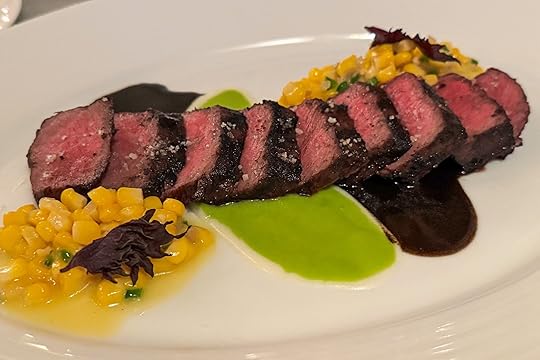
Photo: Christina Berke
After the perfect morning of lounging and relaxing, I walked over to the Wellness Barn where Wendy Wright greeted me, offering a robe to change into. Haley ushered me back for a relaxing 90-minute Antidote massage ($378), followed by a delicious cup of My Mother’s Garden, a floral blend including peppermint, blue mallow petals, lemongrass, and rose. There are also herbal baths that include an artisanal candle and journal to take home, floral readings, and farm-to-beauty facials for your getaway glow-up. Sonoma isn’t just about wine, and Farmhouse is leaning into wellness culture to become a truly Goop-level retreat in NorCal.
Lunch on site offers a lighter, locally sourced flair that you can enjoy inside, poolside, or patioside with the tranquil background of water fountains and birdsongs. I got the Bloomsdale Spinach and Nori Dip, a creative take with pepitas, garlic cloves, and miso on sourdough, followed by the gem Caesar topped with boquerones and pierre poivre. For dessert, try the flavor king pluot crisp — the perfect blend of salty-sweet oat streusel and tart plum. There’s also a juice bar outside. Try one of the cold-pressed juices like the Detox (grapefruit, lavender, lemon, cucumber, mint, and ginger) or a smoothie like the Beekeeper (stone fruit, honey, chamomile, marigold, dates, and alyssum flower). Add in vanilla collagen protein powder, blue spirulina, bee pollen, or a Farmacopia blend like radical immune or super power adaptodens.
Really use up the amenities here and enjoy the room — soak in the jet tub and light some of the provided candles, sit by the fireplace with a glass of wine, read on the patio, or take a steam shower. The property also has options for those who want to get outside the room. Walk the grounds and observe the colorful flowers, meditative fountains, and cute chickens. Sip something local every night from 4:30 to 5:30 PM, when the inn hosts a complimentary wine-tasting called Pour, Restore, and Reconnect from a rotating vineyard.
If wines aren’t your thing, you can learn more about adaptogens and local herbs, honey tastings, and essential oil workshops for mind-body integration. It’s served outdoors and gives you a chance to mingle with other guests. If you have a sweet tooth, cozy up by the communal firepits where you can roast a chef-made marshmallow and make s’mores under the stars. In the morning, try a vinyasa flow yoga class that incorporates a sound bath for a peaceful ending, mat Pilates, or even forest bathing. Poolside yoga under the canopy of redwoods and morning glories? Say less.
Book NowThings to do in Sonoma CountyWalk, shop, wine, and dine in Healdsburg
Little Saints. Photos: Christina Berke
Founded in 1851 by entrepreneur Harmon Heald, Healdsburg offers rustic creekside beauty along the Russian River about an hour from the bustle of San Francisco. The traditional territory of the Pomo Tribe, the town became known as a quiet getaway for those looking to enjoy European vibes without catching a flight.
If you’re not enjoying breakfast at your hotel, walk a few steps across the street to Little Saint. I hadn’t looked at the menu beforehand, but when I arrived, my knee-jerk reaction (like most other guests who came in after me) was to gasp and say out loud, “Oh my god this place is SO CUTE!” It happens to be entirely plant-based with produce and flowers from its own regenerative farm, located less than three miles away. Brunch is served from 8 AM to 3 PM. Try the breakfast sandwich: seitan ham, Just Egg, peppers, and garlic aioli on a housemade English muffin along with rocket and my personal favorite, pickled onions.
I haven’t been vegetarian in years, so I was a bit reserved about it, but this genre of cuisine has come such a long way (or maybe I just got lucky at this heavenly spot). Pair your meal with a skinny glass of an iced latte, or go for one of the Cosmic Cups: ashwagandha cocoa featuring Volo Chocolate, mushroom latte that blends espresso with reishi, chaga turkey tail, shitake and lions mane, or golden milk. Don’t have time to stay? Grab some plant-based lemon ricotta or burrata, fig salami, and wines to pack a picnic.
After your first meal of the day, stroll around downtown Healdsburg. As someone who loves to shop local, I was delighted to see so many mom-n-pops. Many of the clothing shops had sale racks outside to browse for tops and skirts. Lucky Heron is a special shop, and owner Michelle curates a little something for everyone, like Formulary 55’s handmade lotions, sweet little jumpers for sweet little ones, gently used vintage clothing, jewelry, and more.
Pop into Pizzando for a local Straus Farms soft serve organic vanilla ice cream to cool down. And no downtown is complete without a local bookstore. Copperfield’s didn’t disappoint. It had tons of books on sale out in front, but what really makes a book shop for me is its displays. I loved seeing a spotlight of local authors, summer reads with employee handwritten recommendations, and Italian cookbooks, along with cute gifts for the book lover in your life.
For baked goods, check out the chic Costeaux French Bakery, which houses the pie pan of the Guinness World’s Largest Pumpkin Pie (weighing in at 418 pounds) and offers cookies, pastries, and drinks to-go along with its sit-down menu. Another worthwhile activity in Healdsburg is Art Nite, hosted each First Thursday from 5 to 7 PM, with 19 participating art galleries and restaurants offering perks like a free glass of wine or a bowl of guac.

Photos: Christina Berke
For a good night, head to Goodnight’s Prime Steak + Spirits, a steakhouse named after rancher and Western Heritage Museum Hall of Famer Charles Goodnight. For the full experience, see Ashleigh Grace, the lead mixologist upstairs. Not only has she crafted every delicious and expertly balanced cocktail on the menu, but she even makes her own moonshine cherries. Everyone is greeted with a warm welcome and drink recommendations depending on their mood. All night, I kept hearing how incredible each diverse libation was, from the Girl in Green grasshopper and the frozen-jalapeno-topped Jolene to the strawberry-infused, tequila-based beverage called When We Say Goodnight. The standout, though, is her 10-years-in-the-perfecting espresso martini, rimmed with butterscotch and Hawaiian black salt. I was so over the moon about it that the guy next to me ordered one also after he finished his beer and declared it the (second) best damn drink in Healdsburg.
If you want to have a little more than liquid for dinner, Chef David Lawrence’s Japanese A5 wagyu sirloin is a luscious (and splurgy at $105) dream with its crisp edges, melt-in-your-mouth texture, and pristine flavor that truly needs nothing else — though all steaks come with a choose-your-own sauce (try the red wine bordelaise or the chimichurri) and salt (like the truffle or pink Himalayan).
For sides, try the five-cheese lobster mac or the Blue Lake green beans with caramelized Walla Walla onions and roasted garlic-chili butter. Vegetarians can choose from a vast selection of salads like the made-to-order tableside Caesar and dishes like corn bisque, Parker House rolls, crispy maitake mushrooms, burrata, or loaded baked potato. If you still have room, try the fried bread pudding topped with vanilla ice cream, then head to the local dive bar John & Zeke’s where the party keeps going late into the night.
Get a taste of wine country
Banshee Wines. Photos: Christina Berke
Sonoma isn’t known as wine country for nothing, so be sure to set aside time for at least one tasting. Head to Banshee Wines in Alexander Valley (about 15 minutes from Healdsburg) for a Flight of the Banshee Tasting ($40). Hotel 27 North offers a Volvo transfer there.
My tasting started off with the winery’s own deliciously crisp and bright Ten of Cups sparkling brut, followed by a 2021 chardonnay. As a carménère lover, I couldn’t believe how much I liked this California classic white with its baked apple, honey, and citrus flavors. The Trenton Vineyards Russian River Valley pinot noir aged 15 months in French oak offered baked cookies, sassafras, and mocha, while the Anderson Valley one gave Fig Newton, Graham cracker, and caramel. To finish, the Cabernet Franc left a hint of blueberries, dark toffee, and baking spices.
If you’re looking for an event space, the cellar space below brings plenty of room, plus some nostalgic early aughts punk surprise in the form of Avril Lavigne’s old roadie set. 
To Go All-In on a New York City Trip, There’s No Better Basecamp Than the New York Marriott Marquis
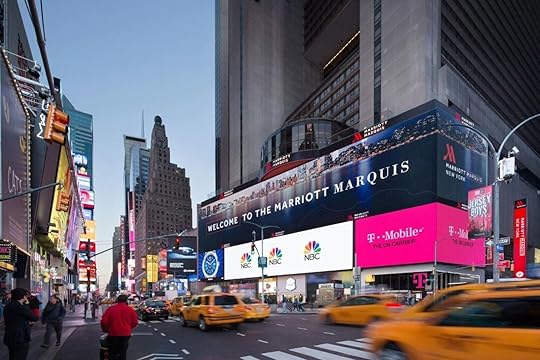
For more than a decade, I’ve made a career out of moving through cities—sometimes chasing breaking news, other times following the quiet hum of a new city. But there’s something about arriving in New York over a holiday weekend that feels electric, as if the city itself is leaning into the long pause right alongside you. Over Labor Day, I checked into the New York Marriott Marquis, the towering property in the heart of Times Square, to see how a classic Manhattan stay might redefine the way I approach long weekends.
Touching down at JFK, I knew better than to wrestle with yellow cab queues or app-based rideshares. Over the years, I’ve learned that the first moments in a new city can set the tone for an entire trip. Plus, I’d decided to go all-in on this trip and make it both posh and easy. So I booked a Blacklane ride—a service I’ve come to rely on when I want both reliability and comfort. My chauffeur was waiting with a crisp sign, a welcoming smile, and a smooth ride into Manhattan.
Sliding into the leather interior of a Blacklane vehicle has become one of those small rituals of luxury for me, the kind that tells me I’ve truly arrived. Watching the skyline sharpen from the backseat, coffee in hand, I was able to slip into New York on my own terms—unrushed, unbothered, and already at ease.
We hope you love the New York Marriott Marquis! Just so you know, Matador may collect a small commission from the links on this page if you decide to book a stay.
Location, location, Times Square
Traveling to New York City? Check out Matador’s New York City accommodations guides: These Airbnbs in Brooklyn Offer Beautiful Views of the Bridge and Skyline The best JFK airport hotels The Best Airbnb Experiences in New York, From an Alpaca Farm Tour To Sailing the East River The 9 coziest Airbnbs in upstate New York Grab Your Crew and Head To These Lux Properties To Take in New York’s Fall Foliage 10 upstate New York cabins perfect for your next winter escape These Manhattan Airbnbs showcase the best of New York City These Staten Island Airbnbs Provide Room to Breathe With Yards and Pools

Photo: Booking.com
The Marriott Marquis, with rooms from around $600 per night, sits squarely on Broadway, a short stroll from the iconic steps in Time Square. For some, Times Square is too much—too many screens, too much noise. But if you’ve ever wanted to be in the gravitational pull of the city, this is the place. From my room on the 18th floor, the city glowed beneath me in real time: the billboards, the cabs, the never-quieting stream of people.
The hotel’s centrality is its secret weapon. In one weekend I managed to walk to the Museum of Modern Art, stroll through Central Park, and be seated for dinner downtown without ever feeling far from my base. For travelers looking to maximize time over a holiday, the Marquis’ location is as quintessential New York as it gets.
Rooms at the New York Marriott Marquis
Photo: Booking.com
The Marriott Marquis is unapologetically big – the 51-story building houses some 1,970 rooms. Unlike so many New York hotel rooms, the rooms here reflect the grand stature of the property. My double king room was a reprieve from the city’s density: floor-to-ceiling windows framing Times Square, plush bedding, and enough square footage to remind me I wasn’t in a shoebox boutique hotel. My guest for the weekend—my mom—gave it her stamp of approval, and if it passes the mom test, you know it’s legit.
The design leaned modern without losing warmth—neutral tones, clean lines, and a workspace that made catching up on a few assignments surprisingly pleasant. One of the unexpected perks was the soundproofing. For all the chaos of Times Square outside, my room felt cocooned in quiet. After a day of traversing the city, I appreciated that silence.
Design & atmosphere at the New York Marriott Marquis
Photo: Booking.com
The lobby is a swirl of movement—guests checking in, Broadway fans ducking into the hotel’s theater entrances, families clustering by the glass elevators. Rising 49 stories, the hotel’s design is anchored by its massive atrium, a cavernous vertical space that channels the same drama as the city itself.
It’s not the understated minimalism you’ll find in boutique properties downtown. Instead, the Marriott Marquis leans into its scale. The design is about theater, about seeing and being seen, about amplifying the energy of Times Square rather than shrinking from it.
M Club Access
Photo: Booking.com
One of the highlights of my stay was access to the M Club, the Marriott Marquis’ exclusive lounge for elite members and select guests. Tucked away from the bustle, the lounge offered daily breakfast with fresh pastries, fruit, and espresso strong enough to power you through the long weekend. In the evenings, it became a haven for light refreshments and desserts.
For me, the M Club was less about the food and more about the atmosphere: an intimate perch above the fray where I could watch the city without having to fight my way through it. For travelers squeezing every ounce out of a long weekend, this access adds measurable value—time saved, comfort gained.
A decade into my career as a traveler and storyteller, I’ve learned that trips are often defined by balance. Luxury balanced with accessibility. Stillness balanced with the thrum of the city. Over Labor Day, the Marriott Marquis delivered exactly that: a front-row seat to the spectacle of Times Square, paired with the quiet comforts of spacious rooms and the refined touch of M Club access. The Marriott Marquis isn’t a retreat from New York—it’s a lens through which to experience the city at its boldest. For a holiday weekend in Manhattan, that’s exactly what I was looking for. 
Joshua Tree’s First New Hotel in 15 Years Is a Minimalist, Mars-Inspired Retreat

Joshua Tree National Park’s surreal desert landscape and star-studded night sky have a way of making travelers feel like they’ve stepped onto another planet. Now, a new hotel on the park’s doorstep offers a boutique stay as striking as the scenery itself. RESET Hotel opened this summer and is the area’s first new hotel construction in 15 years. Matador Network spoke with RESET’s co-founders, Adam Wininger and designer Benjamin Uyeda, to learn how their minimalist, Mars-inspired retreat is reshaping Joshua Tree’s hospitality landscape.
We hope you love the spaces and stays we recommend! Just so you know, Matador may collect a small commission from the links on this page if you decide to book a stay.
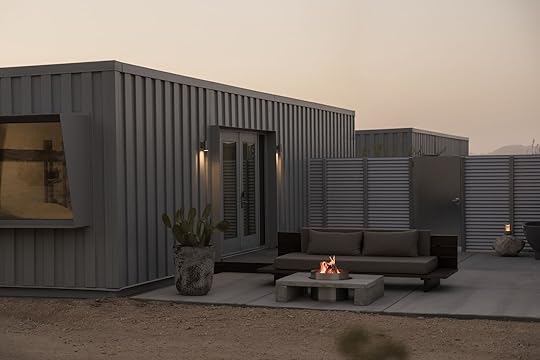
RESET’s modular rooms are laid out like a futuristic village.
Photo: RESET Hotel
For years, visitors to Joshua Tree have stayed in motels, budget lodgings, Airbnb rentals, or camped in the park. What they haven’t had until now is a luxury stay designed to match the landscape. Wininger noticed a glaring gap in 2019 — despite Joshua Tree National Park drawing over three million visitors each year — there wasn’t a single boutique hotel to be found.
This realization coincided with a local affordable housing crisis, exacerbated by the short-term rental boom. Turning residential homes into vacation rentals was pricing out locals and straining the community. “Unless you are building an Airbnb ground up and adding new housing supply one-to-one, converting a house into a permanent Airbnb really hurts the housing supply,” Wininger tells Matador Network via email. Building a hotel on commercially zoned land on the other hand wouldn’t take away housing — an appealing solution to serve tourists without upsetting locals.

Photo: RESET Hotel
By teaming up with Benjamin Uyeda — an architectural designer known for his DIY modular projects — Wininger set out to build the kind of hotel the area was missing. The result is a stunning 65-room property set on 170 acres of untouched desert, with development limited to just 10 acres, only five minutes from Joshua Tree’s North Entrance. Opening in July 2025, RESET is the area’s first new-build hotel in 15 years and serves as a passion project aimed at offering visitors a different way to stay in the high desert while easing pressure on the local housing market.
RESET looks nothing like a conventional hotel. Instead of a single main building with interior corridors, its free-standing rectangular cabins are set in orderly rows. Their corrugated silver siding and crisp geometry nod to co-founder Benjamin Uyeda’s background in shipping-container architecture. Uyeda tells Matador Network that from the start he wanted the design to feel like a modernist village, a place where guests would naturally spend more time outside and less time in front of screens.
View this post on InstagramA post shared by Ksusha Tunikova (@tunikova.k)
That philosophy carries into each guest room. French doors open onto a private patio oriented toward the mountains, erasing the line between indoors and out. There are no interior hallways; raised walkways connect the cabins so every visitor has personal space. Inside, rooms are spare and earthy, with polished concrete floors, warm wood, and stone accents, and colors drawn from the surroundings. Thoughtful details include a solar lantern, in-room pour-over coffee setup, a Solo Stove firepit, and a cushioned patio daybed for stargazing. There’s no television, but a fold-down desk and fast Wi-Fi are there if needed. High-thread-count linens and Flamingo Estate bath products provide a touch of luxury without excess.
Book Now
Cabins were prefabricated off-site, allowing construction with minimal disturbance to the fragile desert soil.
Photo: RESET Hotel
That seamless indoor–outdoor design also sets the stage for the hotel’s shared spaces. At the heart of the property is the Club House, a low-slung communal hub with a co-working area for quick email checks and a relaxed lounge bar. Outside, a 1,600-square-foot saltwater pool and hot Jacuzzi look out over open desert and mountain ridges. Wide platform loungers and shaded cabanas frame the scene, but the real spectacle comes late in the day. “This is the best time to watch the mountains,” Uyeda notes, describing how the jagged peaks “turn soft and orange as the sun sets.” Guests quickly learn to schedule poolside time at dusk, cocktail in hand, for the nightly light show.
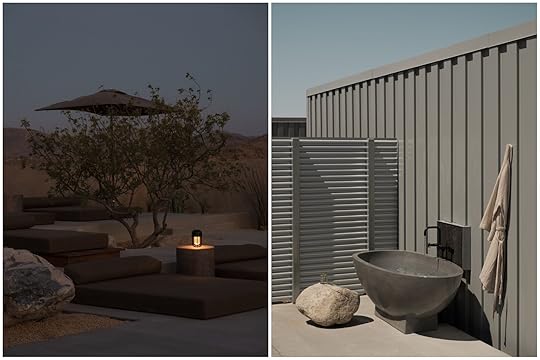
Select suites include private soaking tubs placed to frame the park and mountains.
Photo: RESET Hotel
After dark, with virtually no light pollution, the Milky Way often stretches overhead on clear, moonless nights. The hotel offers guided telescope sessions and self-guided star maps through a partnership with Celestron, but many guests simply stretch out on their patio daybeds or gather at the communal fire pit to watch the night sky. Wininger puts it simply: “If you only have one night, make sure you’re at the pool for sunset, up for one of the sunrises, and sitting by a fire under the stars.”

Photo: RESET Hotel
RESET’s shared amenities bring a touch of luxury to the remote setting. An open-air spa features a five-person sauna and a cold-plunge tub for a bracing reset after a day of hiking, and morning yoga sessions help guests start the day. More than 100 acres of the property remain undeveloped, laced with self-guided trails and rotating outdoor art installations. The onsite café and bar, Split Rock, serves cocktails, sandwiches, and small plates in a casual setting. Guests can enjoy their food and drinks poolside, in the lounge, or back in their rooms. For a wider range of dining options, it’s easy to venture into Twentynine Palms or nearby Joshua Tree for everything from coffee and brunch spots to Mexican restaurants and roadhouse-style barbecue.
RESET sits about a five-minute drive from Joshua Tree National Park’s North Entrance and roughly two and a half hours by car from Los Angeles. Palm Springs International Airport is the closest major airport, about an hour away, and a rental car is essential for reaching the property and exploring the park. Nightly rates start around $250. 
September 16, 2025
This May Be the New Piece of Camping Gear You See Everywhere in 2026 and Beyond

For years, travelers who want the experience of camping without sleeping in a tent have been stuck with basically one of two options: drive a huge RV or campervan, or tow a trailer behind your car. In the last decade or so, pop-up truck campers and top-of-car rooftop tents have created a sort-of third option that can be a bit more affordable than a full campervan. All options have their pros, but each comes with compromises, whether that’s ladders and tricky access, extra insurance requirements, or extra fuel consumption — not to mention a steep price tag.
But as of September 2025, a Swedish brand well known in the US may have changed that. The brand just introduced a new way to camp that Matador Network‘s outdoorsy editorial team thinks may become a major trend in 2026 and beyond: a hitch-mounted, compact tent that’s easy to tow behind any car, including small sedans. It’s called the Thule Outset, and it could make elevated car camping an option for a whole new class of casual campers who aren’t ready to invest in a new vehicle, but don’t want to sleep on the ground, either.
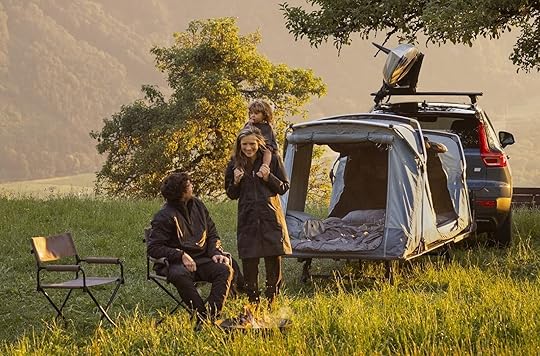
Photo: Thule
Unlike rooftop tents that require heavy lifting to mount on crossbars, the Outset slides directly into a two-inch vehicle hitch (the standard size for most vehicles). At around 163 pounds, it’s light enough to maneuver by hand, with a wheel kit that makes it rollable and mountable by just one person. Once parked, the tent swings open to create a platform bed a few feet above the ground. Setup is faster than most roof tents, and because the unit sits at ground level, you step inside rather than climbing a ladder. It comes with a mattress that stores inside the tent when folded, and Fredrik Ekvall, Director of Product Development for Thule’s adventure camping division, says there’s extra space beyond that. “You can even keep your bedding, including sleeping bags, in the tent when you fold it up to travel with it,” he told Matador Network.
The design has one other major advantage: you can detach the tent and leave it at camp. With rooftop tents, any run into town requires packing up and collapsing your sleeping space. With the Outset, you can drive away and return to a ready-made basecamp. It’s one of the major perks offered by a towed camping trailer, but without the towing burden — or the gas guzzling. “Thule Outset has little to no impact on fuel economy or battery range due to its back-of-car positioning,” Ekvall adds, “as opposed to a rooftop tent on the roof of your vehicle.”
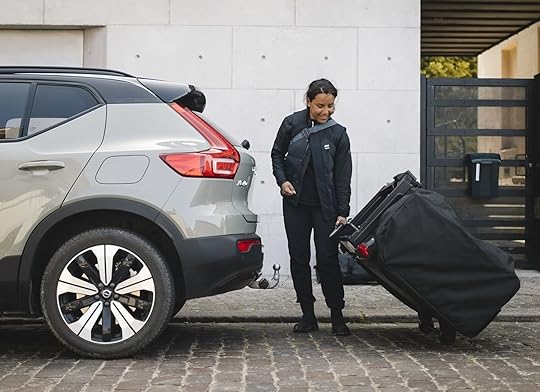
Photo: Thule
The camping market hasn’t seen many hitch-mounted tents, and certainly none from widely known, reputable brands like Thule. A few niche companies have experimented with them, but the Outset is the first to gain international distribution and mainstream credibility. That means it’s effectively creating a new product category.
Compared with rooftop tents, the Outset seems like it has a few distinct advantages: first and foremost among them being easy access. “You’re up off the ground without needing a ladder,” says Ekvall of the Outset, “so the tent is great for anyone who has trouble getting up the ladder and into the tent, including your furry friends.” That’s especially useful for people who camp with their dogs that may be all too used to the hassle of lifting their dog into a rooftop tent (or trying to encourage their dog to climb into the tent via a yoga mat across the windshield).
While the Outset isn’t compatible with hitch-mount bike racks, it does leave your cars crossbars available for mounting toys like bikes, kayaks, or skis. It also flips down when attached, giving you easy access to your hatchback or trunk space.

Photo: Thule
Perhaps most importantly for multi-day campers, you can leave the Outset behind when you need your car during the day. That’s essential for first-come, first-served campsites, and means you don’t need to worry about towing anything or driving a large, heavy trailer up winding mountain roads during remote adventures. There’s no additional insurance required for the Outset, and even tiny cars are able to tow it — unlike trailers and teardrops, which sometimes require a more powerful engine with a higher tow capacity to safely carry them. Cars do, however, need to have at least nine inches of clearance, and not have a rear-mounted spare tire (like a Jeep Wrangler).
Importantly, the Outset isn’t the kind of thing that requires an extra parking spot. Closed, its dimensions are 56.8 x 29 x 35 inches. While that’s larger than, say, an actual camping tent, it’s small enough to push in a corner of a garage or potentially store in front of your car in an assigned parking space.

Rooftop tents are generally more affordable, but come with mounting and access challenges. Photo: DinkeyDoodle/Shutterstock
Matador Network’s team hasn’t been hands-on with the Outset, so we can’t yet speak to its pros and cons. The most obvious catch is, unsurprisingly, the price. At $4,699, it’s far less expensive than teardrop trailers, pop-up campers, or campervans, but more expensive than most rooftop tents. Thule’s own rooftop tents range from the $2,999 “Thule Foothill” to the $3,999 “Thule Basin,” and rooftop tents at REI range from $2,000 to $4,600. For campers thinking about buying a trailer or camper van, $4,699 will seem like a steal. But it’s certainly pricey if you’re currently camping on the ground with a $300 tent and some air mattresses.
For the price, the Outset comes with a travel/storage cover to keep it clean, a 2.7-inch mattress, a rain cover, locks to secure it to your vehicle, and a limited lifetime warranty. It sleeps three people, and optional accessories like additional storage pockets or awnings can be purchased separately.
Ultimately, we’re keen to see if this catches on, and hope it opens a new wave of similar products from other outdoor brands. We’re in favor of any products that make camping and the great outdoors accessible to more people (as long as they’re responsible and respectful, of course). In speaking with Thule, it sounds like that’s the brand’s goal as well. “Following the growing interest in rooftop tents, and as dedicated campers ourselves here at Thule, we wanted to create a product that would open this type of camping to even more people,” says Ekvall. “Our ambition was to offer that same premium camping experience as a rooftop tent but make it more convenient and accessible.” 
More like thisCampingEverything You Need to Stay Warm and Cozy for Fall Camping
September 15, 2025
Why Rare Book Rooms Are the Best-Kept Secret for Travelers Who Love History

“And this is Grip, the raven,” my guide said, gesturing toward a stuffed bird encased in ornate glass. “She belonged to Charles Dickens — mischievous in life, stuffed in death, perched above his desk.” She told us that Dickens included Grip as a character in Barnaby Rudge. Edgar Allan Poe read it and thought he could do better. “And so came his poem, ‘The Raven,’” she added.
I stared at the bird, awed. In all my travels, I’ve never felt so in the presence of a literary omen. However, I wasn’t in a museum or a ticketed exhibit, but a rare book room tucked away inside the Free Library of Philadelphia — open to the public, free of charge.

Grip, the raven once owned by Charles Dickens. Photo: Free Library of Philadelphia/Will Brown
My tour guide, warm and witty, led us through an Egyptian papyrus scroll from the Book of the Dead, a cuneiform tablet, illuminated medieval texts, and original sketches from Beatrix Potter, who created the Peter Rabbit books. She fielded our enthusiastic interruptions with good humor.
“I heard Grip died of lead poisoning,” piped up an enthusiastic bibliophile.
“Likely true,” she replied.“After biting one of Dickens’ children, she was banished to a shed where she may have gotten into lead paint.”
The tour ended in a wood-paneled sanctuary, holding the reassembled library of a wealthy book collector and Dickens fan. Against one wall rested Charles Dickens’ original writing desk.
Spending an afternoon on a rare book tour hadn’t been my idea. With only two days to spend in Philadelphia, it sounded like a musty waste of precious time. But that hour turned out to be one of the most memorable parts of our trip.

Powell’s Rare Book Room in Portland, OR. Photo; Powell’s Rare Book Room
On the third floor of the world’s largest bookstore, Powell’s City of Books in downtown Portland, the rare book room inspires reactions so strong that Rare Book Specialist Kirsten Berg keeps tissues handy. A teacher might see a signed edition of a Robert Frost poem they’ve taught in class, or a first printing of To Kill a Mockingbird, and slowly tear up, she says. I understand the sentiment. Seeing Beatrix Potter’s original sketches in person moved me too, though I admit I didn’t cry.
Berg defines a rare book room as a space dedicated to significant books worth preserving. But she stresses that they’re also places that shine a light on human history and self-expression.
Barbara Basbanes Richter, a former columnist for Fine Books and Collections, ghostwriter, and literacy startup entrepreneur, says that rare books can be an antidote to the digital era, serving as reminders of our shared lineage. “With rare books, we’re really only temporary custodians of these things,” she says. “You might be touching a book that was owned by Abraham Lincoln when he was learning his ABCs in the log cabin. That’s pretty special.”

The rare book Reading Room at the Folger Shakespeare Library. Photo: The Folger Shakespeare Library
With technology taking over so many aspects of daily life, Richter reflects, many of us are wondering about our place in the world. Rare book rooms are where we can remind ourselves that not everything is happening online.
Though it’s true we can find most reading materials digitized, Greg Prickman, Folger Shakespeare Library’s Eric Weinmann Librarian and Director of Collections, cautions against assuming that everything important is online. “Anybody who limits their research or their experience of rare books to what is available digitally is missing an enormous amount,” he advises. For him, rare books answer a modern hunger for something “real, physical, tangible and, dare I say, historical, something that has borne witness to other times and places and still exists.”

The writer in the Philadelphia rare book room, and a Fraktur manuscript, circa 1833. Photo: Krisann Valdez
Rare book rooms often house collections tied to the local citizens. That was the case with the recreated library in Philadelphia. And in San Diego, it’s artifacts and texts from the first missions.
But collections can also immerse you in a particular time or place. Take the Folger Shakespeare Library, for example. Located in Washington, DC, the library has little to do with American history. Instead, it holds the world’s largest collection of the First Folios – the first collections of Shakespeare’s works, published just a few years after his death. Of the 82 copies the library owns, no two are exactly alike, and they hint to the history and interests of those who owned them. The Folger Shakespeare Library also houses material from others who lived during Shakespeare’s time, such as diaries, recipe books, and materials written by others. Together, they help paint a picture of what life was like in Elizabethan England (the period from roughly 1550 to 1600).
In fact, the Folger’s Reading Room was designed to resemble an Elizabethan Great Hall. Prickman offers a word of advice for people immediately after entering the room: just take it in. He encourages visitors to remember the decades of history and people that have come into the room to study. “If you just take a minute and experience the room and how it sounds and how it looks, how the lights move through the stained glass,” Prickman says, “you become attuned with this awe-inspiring space.”

Cuneiform inscriptions on clay tablet, circa 2300 BCE, owned by the Hervey Family Rare Book Room in San Diego. Photo: San Diego Public Library Digital Archives
The challenge for curators in rare book rooms is satisfying public curiosity while simultaneously protecting fragile items from light, humidity, and handling.
For instance, a 13th-century Bible might only appear briefly each year. “Even though we have sunblocked windows, shade, and film on the windows,” says Matthew Nye, Special Collections Manager at the Hervey Family Rare Book Room in San Diego. “We don’t want to expose it to the light, period.” He explained that every piece has its own prescription of how long and when it can make an appearance, based on factors like age, interest, and materials.
In many rare book rooms, items rotate every few months, meaning visitors may see something new each time.

The Morgan Library in NYC. Photo: EWY Media/Shutterstock
It may be easier to visit a rare book room than you expect. They’re usually free (or close to it), tucked into libraries and bookstores in cities worldwide. Most are filled with treasures many travelers would pay good money to behold in a museum.
But there’s a common caveat: access varies. Some rare book rooms are strictly for scholarly use, while others require reservations. It’s best to research and plan in advance, but don’t let reservation requirements and limitations make you think you’re not welcome. “Once there, you’re among fellow book lovers who are often enthusiastic to show you the materials,” says Richter.
Some, though, are more flexible. The San Diego Central Library’s Hervey Family Rare Book Room is open during library hours. Visitors can meander in at their leisure, provided a docent is present. However, Nye does recommend calling ahead to request a tour, as it will make the experience more meaningful.

One of the few surviving “First Folios” of William Shakespeare’s works. Photo: Lewis Tse/Shutterstock
Prickman of the Folger Shakespeare Library stresses that the room is for everyone to appreciate and enjoy. Guests are advised to book a pay-what-you-want timed-entry pass to visit the library’s publicly accessible exhibition halls, or book a $25 group tour to visit the Elizabethan Theatre or reading room. Items from the rare book room also make it into the public exhibition halls on a rotating, regular basis. Visitors on research missions can register for access to the full collections, with recommendations on how to request materials in advance available online.
Visitors to Powell’s Rare Book Room in Portland must request a pass from the information counter, available for timed entries between 10 AM and 5 PM. Burton Barr’s Rare Book Room in Phoenix, Arizona, is open by appointment only, with occasional public events and tours.
However, one rule is the same in all rare book rooms: mind your manners. Rare books rooms aren’t merely backdrops for photography or live streaming. Instead, engage with the material and treat the space (and books and items) respectfully.

Photo: BearFotos/Shutterstock
Skip a rare book room, and you miss seeing up close cuneiform, Dickens’ desk, or a legendary taxidermied raven. Save an afternoon for one, and you’ll walk away with an intimate experience that a crowded museum can’t match.
Grolier Club (New York, New York)Morgan Library (New York, New York)Folger Shakespeare Library (Washington, DC)Cotsen Children’s Library, Princeton University (Princeton, New Jersey)Mortimer Rare Book Room, Smith College (Northampton, Massachusetts)Houghton Library, Harvard University (Cambridge, Massachusetts)Boston Public Library (Boston, Massachusetts)Boston Athenaeum (Boston, Massachusetts)Hervey Family Rare Book Room (San Diego, California)Powell’s City of Books (Portland, Oregon)Burton Barr Library (Phoenix, Arizona)American Library (Paris, France)London Library at St. James Square (London, England) More like thisThe 28 Coolest Independent Bookstores in the US
More like thisThe 28 Coolest Independent Bookstores in the US
Colorado Gets Its First Two‑Star Michelin Restaurant in Impressive 2025 Guide List

After three years covering Colorado, the 2025 Michelin Guide recognized the first two-star designated restaurant in the state: Denver’s The Wolf’s Tailor. Renowned for its seasonal, hyper-regional tasting menus, The Wolf’s Tailor moved from one to two star. It also retained its Michelin Green Star, an award for environmental stewardship shared in Colorado only with Denver’s Brutø, which kept its one-star and Green Star status.
Three Denver restaurants earned their first stars from everyone’s favorite restaurant-rating tire company: Kizaki, an intimate omakase restaurant; Margot, a contemporary American restaurant from chef Kelly Whitaker; and Mezcaleria Alma, which has a Mexico City inspired food and drinks menu and joins its sister restaurant Alma Fonda Fina on the one-star list. Beckon, also in Denver, kept its one-star designation as well.

Photo: Shawn Campbell for Mezcaleria Alma
The Michelin Guide Colorado now highlights 50 restaurants in Denver, Boulder, Aspen and Snowmass Village, and Vail and Beaver Creek. In addition to the two stars for The Wolf’s Tailor, six Colorado restaurants have one star, 10 have Bib Gourmand recognition, and 35 are recommended.
Outside the Mile High City, Vail’s omakase and sake restaurant Osaki retained its one-star distinction. Boulder’s Frasca Food and Wine kept its one-star designation for the third consecutive year, recognized for its tasting menus inspired by the cuisine in Northern Italy. Aspen’s Bosq, which highlights foraged Rocky Mountain ingredients, also remained on the one-star list.
Michelin’s Special Awards in Colorado this year stayed in Denver for all but one. Dustin Lawlor of Hop Alley received the Exceptional Cocktails Award for his inventive bar program. Heather Morrison of Restaurant Olivia earned the Outstanding Service Award, and Aiden Tibbetts of Wildflower was named the Michelin Young Chef of the Year. Nick Heilman, of Bosq, was named for the Michelin Sommelier Award.

Photo: Shawn Campbell for Mezcaleria Alma
Cozobi Fonda Fina in Boulder was added to the Bib Gourmand (“great food at
a great value”) list this year. The guide also added three restaurants to its Recommended list in Denver: Alteño, Ukiyo, and Wildflower.
“Year three marks an exciting year for the Colorado selection, with the first Two Star restaurant being awarded to The Wolf’s Tailor,” Gwendal Poullennec, the international director of the Michelin Guide, said in a press release. “The selection is full of talent and a wide array of cuisine types proving Colorado is an international culinary destination for travelers both near and far.”
You can find more on the full list of Michelin-recognized restaurants in Colorado here. 
The 17 Most Stunning Ski-In/Ski-Out Rentals On Airbnb

Temperatures are cooling, hot cider will soon be brewing, and powder season is right around the corner. It’s time to dig out the salopettes and prepare for this year’s winter sports escape. Choosing a self-catered chalet on the edge of town allows for greater nature immersion and accommodates groups with mixed interests. These ski-in/ski-out Airbnbs in North America and Europe come with mountain views and luxury amenities that you’ll all après-ciate after a day on the pistes. Just don’t leave it too late — popular retreats like this fill fast once the snow reports start rolling in.
We hope you love the spaces and stays we recommend! Just so you know, Matador may collect a small commission from the links on this page if you decide to book a stay. Listed prices are accurate as of the time of publication.
Jump to: Ski in/ski out Airbnbs in Europe4-bedroom chalet with ski-in/out access and hot tub — Breckenridge, Colorado Photo: Airbnb
Photo: Airbnb Photo: Airbnb
Photo: Airbnb Photo: Airbnb
Photo: Airbnb Photo: AirbnbSee more photos
Photo: AirbnbSee more photosThis Breckenridge home sleeps eight across four king-bed suites, each with its own bathroom, making it a comfortable choice for families or groups. Recently updated with new furnishings, it combines the ease of ski-in/ski-out access — just a short walk to the Burro Trail, which connects to the Peak 8 SuperConnect lift — with the convenience of a free shuttle that stops at the driveway every 15 minutes. After a day on the mountain, unwind in the private hot tub or gather in the spacious living areas. Breckenridge Ski Resort covers nearly 3,000 acres over five peaks, with everything from gentle beginner runs to challenging high-alpine bowls. When you’re not skiing, downtown Breckenridge is only a five-minute drive away, offering Victorian-era streets lined with restaurants, breweries, and shops — along with plenty of après-ski spots. Wildlife is common in the neighborhood, so it’s not unusual to spot deer or even moose from the property.
Eight guests, four bedrooms
Price: $700 per night
Check out other Airbnbs in Breckenridge
3-bedroom townhouse for a group next to Moose Creek chairlift — Jackson, Wyoming Photo: Airbnb
Photo: Airbnb Photo: Airbnb
Photo: Airbnb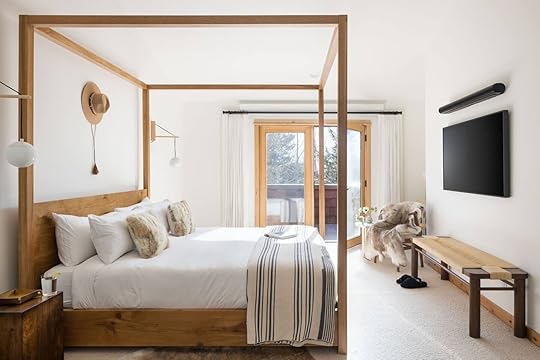 Photo: AirbnbSee more photos
Photo: AirbnbSee more photosStep out the door of this epic rental and you can walk to the Moose Creek chairlift, giving you seamless ski-in/ski-out access to Jackson Hole’s legendary slopes. The townhouse has three bedrooms that sleep seven comfortably: a primary with a king bed and sofa sleeper, a second with a California king, and a third that converts between two twins or a king. After skiing, you can soak in your private hot tub or make the short trip to the Sundance Swim and Tennis Club for a heated pool, hot tubs, and racket sports. A wood-burning fireplace and floor-to-ceiling windows keep the living areas warm and bright, while the setting in Teton Village places you close to restaurants, après-ski spots, and mountain shops. With more than 4,000 feet of vertical terrain, Jackson Hole Mountain Resort is one of the country’s most challenging destinations — and Grand Teton National Park — less than a mile away — adds year-round hiking, wildlife, and scenery to the mix.
Seven guests, three bedrooms
Price: $314 per night
Check out other Airbnbs in Jackson Hole
4-bedroom luxury platinum home steps from Chair 20 — Vail, Colorado Photo: Airbnb
Photo: Airbnb Photo: Airbnb
Photo: Airbnb Photo: Airbnb
Photo: AirbnbSee more photos
Being just a few steps from Chair 20 means you can click into your skis almost as soon as you step outside, making this home an easy base for exploring Vail’s sprawling terrain. The more than 2,500-square-foot layout includes four bedrooms and four bathrooms, with fireplaces in both the living room and the primary suite. After skiing, soak in the private hot tub or gather for dinner around the hardwood table after cooking in the chef’s kitchen, which is equipped with Wolf appliances and twin wine coolers. Staying here also gives you access to the amenities of the Grand Hyatt Vail — including dining at Makoto Vail, a spa, fitness center, and an outdoor heated pool. Beyond the house, Vail Mountain offers over 5,000 skiable acres across back bowls, groomers, and Blue Sky Basin, while Lionshead and Vail Village are just a short shuttle ride away for après-ski and shopping.
Eight guests, four bedrooms
Price: $598 per night
Check out other Airbnbs in Vail
10-guest slope-side home with sauna, hot tub and spa — Snowmass Village, Colorado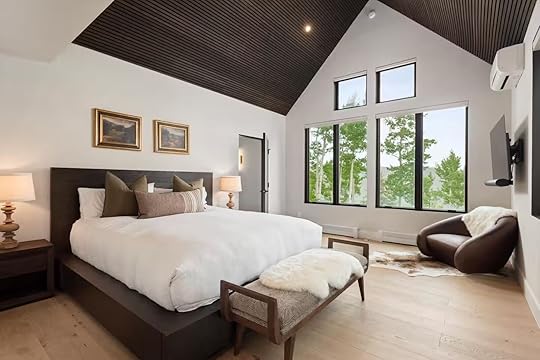 Photo: Airbnb
Photo: Airbnb Photo: Airbnb
Photo: Airbnb Photo: Airbnb
Photo: Airbnb Photo: AirbnbSee more photos
Photo: AirbnbSee more photosPerched directly on Snowmass Mountain, this four-bedroom home that sleeps 10 sits beside the ski runs. Expansive living areas are warmed by gas fireplaces and natural light from a dramatic skylight dome, and outside, you can unwind in the private hot tub, barrel sauna, or around the firepit on the deck with mountain views. Snowmass Resort spans more than 3,300 acres with nearly 4,400 feet of vertical, known for its long cruisers, terrain parks, and tree runs. In nearby Snowmass Village, you’ll find après spots, casual mountain grills, and fine dining like Il Poggio and Toro Kitchen — and Aspen’s nightlife is just a short drive away.
10 guests, four bedrooms
Price: $1,920 per night
 Photo: Airbnb
Photo: Airbnb Photo: Airbnb
Photo: Airbnb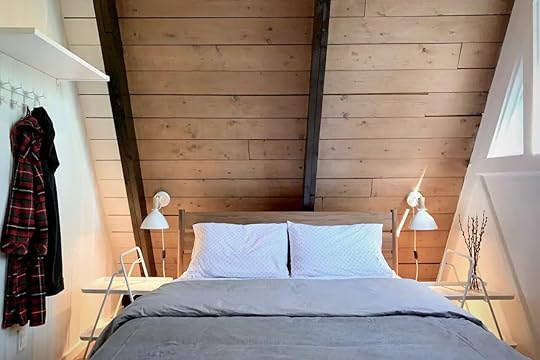 Photo: Airbnb
Photo: Airbnb Photo: Airbnb
Photo: AirbnbSee more photos
This skier’s Airbnb is located right next to the Muskoka Ski Club (formerly Hidden Valley). Snowshoes are provided for free, and there’s ample space to store your boards, skis, and boots. The two-story chalet was built in the 1970s but has undergone thoughtful renovation to provide a four-season woodland retreat. Spend evenings tinkering with the telescope — and keep your eyes peeled for passing deer.
Two guests, one bedroom
Price: $220 per night
 Photo: Airbnb
Photo: Airbnb Photo: Airbnb
Photo: Airbnb Photo: Airbnb
Photo: Airbnb Photo: AirbnbSee more photos
Photo: AirbnbSee more photosThis is a relatively new listing, but it’s already a top one percent listing on Airbnb — which means it’s got a spotless record. Less than a minute from the Silver Strike ski lift, this luxury condo is one to bookmark. From this location, you can beat the crowds on a powder day, as many will be getting on the mountain at Snow Park or Silver Lake. And you can enjoy mountain views from floor-to-ceiling glass windows, which offer breathtaking views from every room. You’ll also have access to resort-like amenities, including an outdoor spa pool, gym, ski valet, bowling alley, and après-ski. To top it off, 100 percent of the condo’s energy is generated by wind and solar — so it’s also a sustainable option.
10 guests, three bedrooms
Price: $549 per night
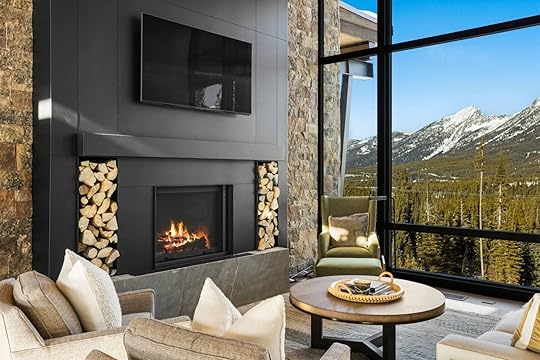 Photo: Airbnb
Photo: Airbnb Photo: Airbnb
Photo: Airbnb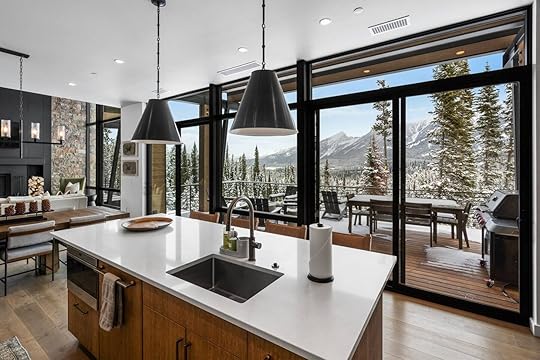 Photo: AirbnbSee more photos
Photo: AirbnbSee more photosAn indication that Big Sky is leveling up the luxury rental market, this new build is another relatively new listing on Airbnb. The four-bedroom accommodates up to ten guests and is situated in Moonlight Basin. Moonlight Basin is a private ski area adjacent to Big Sky Resort. While it’s connected and shares terrain and lift access, Moonlight Basin is a smidge more exclusive. With its prime location on the north side of Lone Peak, this area often receives generous snowfall and enjoys consistent snow conditions throughout the winter season. The open-concept new build was designed by Reid Smith Architects, a firm specializing in designing homes that seamlessly blend modern aesthetics with the natural beauty of the surrounding mountain landscape. Expect floor-to-ceiling glass windows, beautiful outdoor living spaces, and spectacular mountain views from every room in the house.
10 guests, four bedrooms
Price: $1,651 per night
 Photo: Airbnb
Photo: Airbnb Photo: Airbnb
Photo: Airbnb Photo: Airbnb
Photo: Airbnb Photo: AirbnbSee more photos
Photo: AirbnbSee more photosThis minimalist rental for couples and small families immerses you in Canada’s boreal forest with views over Laurentian Park. Snow-white and creamy interiors are interrupted only by the glow of the fireplaces. Visit in winter for snowshoeing, cross-country skiing, and fat biking out the backdoor — while evenings can be spent on the terrace, nursing hot chocolate as the sun sets.
Four guests, two bedrooms
Price: $290 per night
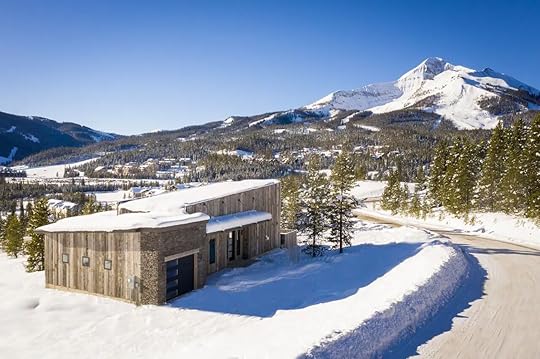 Photo: Airbnb
Photo: Airbnb Photo: Airbnb
Photo: Airbnb Photo: Airbnb
Photo: Airbnb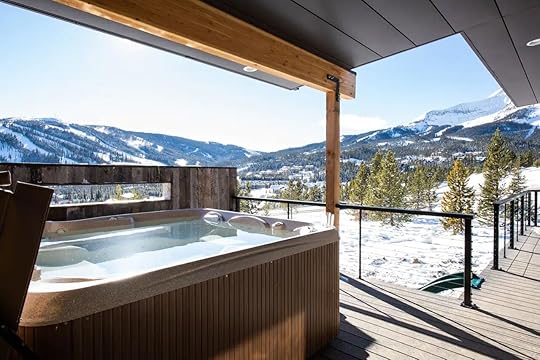 Photo: AirbnbSee more photos
Photo: AirbnbSee more photosThis custom-built chalet near Big Sky Resort has ski-out privileges and mountain views galore. It sits on its own lot on the outskirts of town, with a private hot tub and a ping pong table for everyone’s après needs. The interiors are top-notch, complete with a chef’s kitchen and a breakfast bar angled at Lone Peak. Elevate your stay by renting the host’s snow buggy — a fun and functional way to explore the area.
Eight guests, three bedrooms
Price: $599 per night
Check out other Airbnbs in Big Sky
4-bedroom luxury house with a panoramic rooftop — Park City, Utah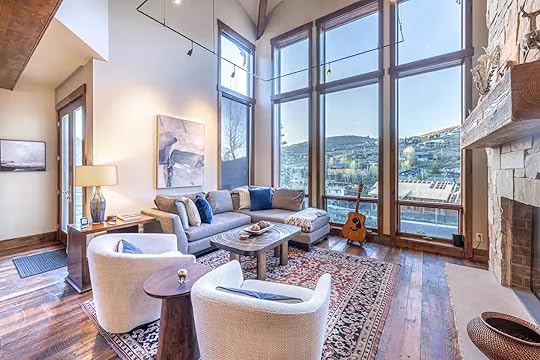 Photo: Airbnb
Photo: Airbnb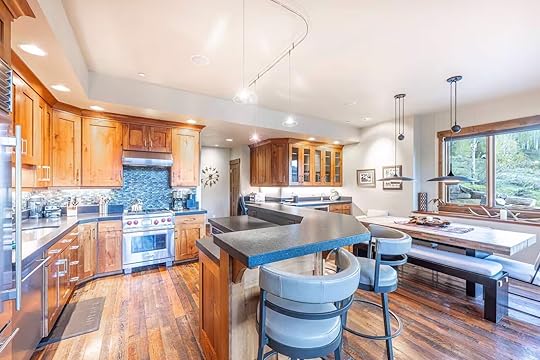 Photo: Airbnb
Photo: Airbnb Photo: Airbnb
Photo: Airbnb Photo: AirbnbSee more photos
Photo: AirbnbSee more photosThis rental is hosted by a property management company specializing in luxury vacation rentals in Park City. A stay here promises the best of both worlds: a quiet location — yet only minutes from the snow. It’s just over a mile to Deer Valley Resort and under two miles from Park City Mountain Resort, and the free shuttle service stops just a few steps from the front door. The four-bedroom home sleeps 10 and has an epic rooftop terrace with a hot tub and panoramic views (including a front-row seat to the happenings on Iron Mountain). There are also three huge outdoor decks, one with a grill and fire pit for après-ski hangs. The interior is open-concept, ideal for entertaining, and the kitchen is top-tier. All practicalities have been considered, including a mudroom and a secure two-car garage.
10 guests, four bedrooms
Price: $404 per night
Check out other Airbnbs in Park City
Ski-in/ski-out spa chalet near Levi — Kittilä, Finland Photo: Airbnb
Photo: Airbnb Photo: Airbnb
Photo: Airbnb Photo: Airbnb
Photo: Airbnb Photo: Airbnb
Photo: AirbnbSee more photosIn addition to being the largest winter sports resort in Finland, Levi has runs suitable for beginners and offers cross-country skiing and snowmobile rental. As such, this winter wonderland chalet is one of the best ski Airbnbs for mixed groups and families. The rental has tons of gear storage plus a small surcharge means you get to defrost in the wood-fired hot tub and Finish sauna.
Seven guests, four bedrooms
Price: $313 per night
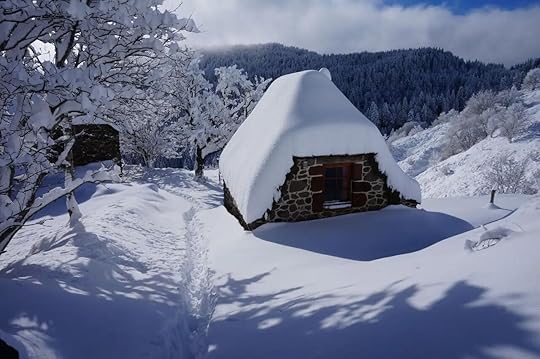 Photo: Airbnb
Photo: Airbnb Photo: Airbnb
Photo: Airbnb Photo: Airbnb
Photo: Airbnb Photo: Airbnb
Photo: AirbnbSee more photosThis storybook Airbnb in the French Alps clings to the southern slope of Mont Mézenc. Sitting at an altitude of 4,429 feet, the air is fresh and the mountain landscapes are astounding from all angles. The host provides copious firewood to ensure you stay warm and dry as the snow falls thick and heavy. Stockpile the cheese and wine; if you’re lucky, you might get snowed in for the season.
Three guests, one bedroom
Price: $64 per night
 Photo: Airbnb
Photo: Airbnb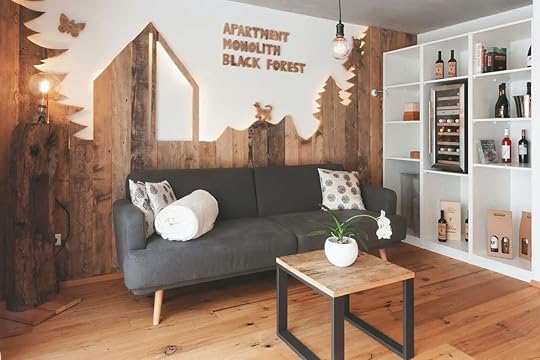 Photo: Airbnb
Photo: Airbnb Photo: Airbnb
Photo: Airbnb Photo: Airbnb
Photo: AirbnbSee more photosThis brand-new vacation apartment gives you a mix of downhill and cross-country pistes, tobogganing, sledding, and snowshoeing. The modern interiors have a subtle alpine theme and come with all the amenities you’d possibly need for a winter getaway in the mountains. There’s even a starter supply of spices and oils plus the option to purchase premium wines from the cooler.
Three guests, one bedroom
Price: $162 per night
 Photo: Airbnb
Photo: Airbnb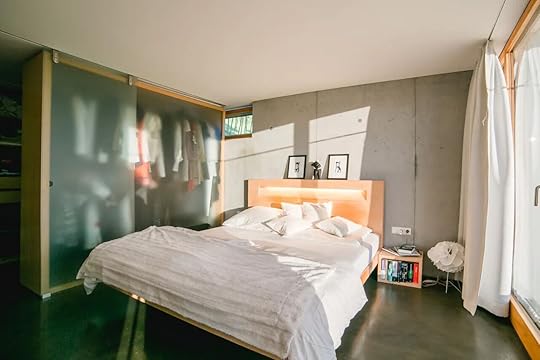 Photo: Airbnb
Photo: Airbnb Photo: Airbnb
Photo: Airbnb Photo: Airbnb
Photo: AirbnbSee more photosThis Airbnb in the Austrian Alps is a short drive from the Bödele, Mellau, and Damüls ski centers. It’s an “upside down” design with the bathrooms on the first floor and the living quarters and kitchens on the second floor to capitalize on the scenery. Picture windows have awesome views over the valleys with an assortment of seating where you can wind down between activities.
Eight guests, three bedrooms
Price: $287 per night
 Photo: Airbnb
Photo: Airbnb Photo: Airbnb
Photo: Airbnb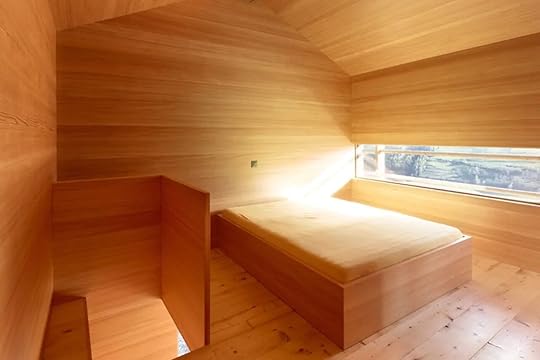 Photo: Airbnb
Photo: Airbnb Photo: Airbnb
Photo: AirbnbSee more photosThis designer chalet on the Swiss-French border floats above the teeny mountain hamlet of Biolley. It’s 10 minutes from the pistes of Champex-Lac where you can sign up for hiking with St. Bernard dogs and only 20-30 minutes from the La Fouly and Verbier ski resorts. Spare yourself the hassle of cooking and ask about having a locally sourced breakfast delivered to the terrace.
Four guests, two bedrooms
Price: $188 per night
 Photo: Airbnb
Photo: Airbnb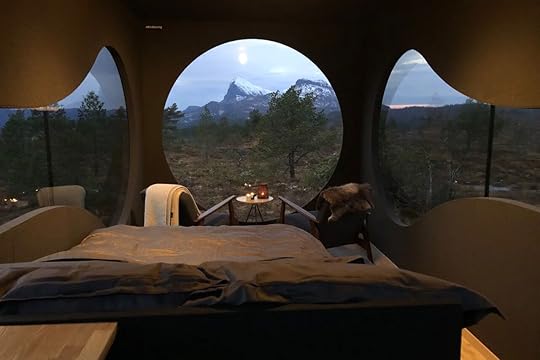 Photo: Airbnb
Photo: Airbnb Photo: Airbnb
Photo: Airbnb Photo: Airbnb
Photo: AirbnbSee more photosRoost amid the purest Norwegian nature at this unique Airbnb near Langeland Ski Center. The rental includes the main cabin where you’ll wake up to vistas of Lillehesten and Storehesten mountains plus a loo with a view. It’s a 15-minute hike up to Birdbox but that’s counteracted by the downhill ski-out. The friendly hosts will provide tapas and breakfast upon request to reduce the load.
Two guests, one bedroom
Price: $324 per night
 Photo: Airbnb
Photo: Airbnb Photo: Airbnb
Photo: Airbnb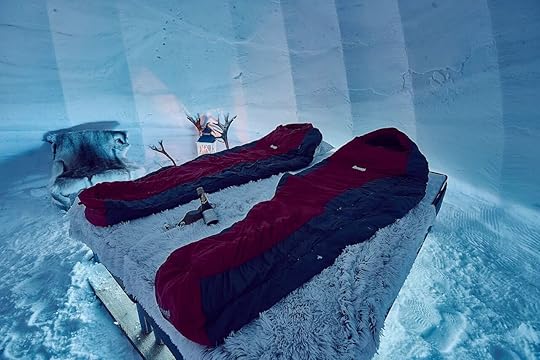 Photo: Airbnb
Photo: Airbnb Photo: Airbnb
Photo: AirbnbSee more photosFreeze the day and book this ice dome in Lapland before it melts. The hosts build these igloos every winter on their family-owned ranch where you might catch a sighting of the Northern Lights dancing overhead. They also offer an array of activities including snow surfing and snowshoeing. It’s minus degrees inside but your trusty long johns and the thermal bedding will keep you feeling toasty from head to toe.

Four guests, one bedroom
Price: $159 per night
The ‘Conjuring’ House May Open Up For Haunted Tours and Overnight Stays

It’s been eerily quiet at the legendary “Conjuring” house in Burrillville, Rhode Island, since the town revoked its business license late last year. The steady stream of ghost-tour traffic has stopped, but in a plot twist fit for a horror movie, the farmhouse is now headed to foreclosure auction on Halloween 2025. Paranormal fans are watching closely, hoping new ownership will reopen it to the public.
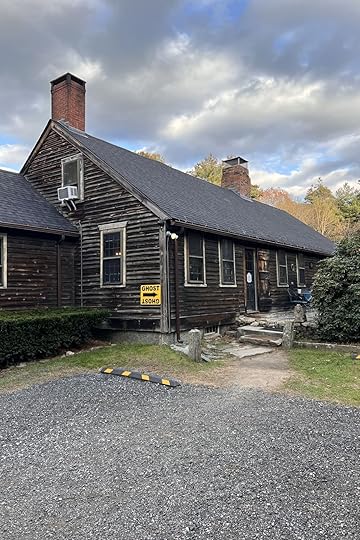
Photo: Katyplace/Shutterstock
The house at 1677 Round Top Road looks like any other weathered New England farmhouse from the outside, but horror fans know it as the site of the Perron family haunting, investigated by Ed and Lorraine Warren in the 1970s and later dramatized in The Conjuring (2013), the first film in what became a blockbuster horror franchise.
The movie wasn’t filmed in Burrillville, but its success revived global interest in the farmhouse and the stories tied to it. Since then, the property has drawn a steady flow of ghost hunters, horror fans, and curious travelers eager to see the place that inspired one of modern cinema’s most enduring supernatural stories.
According to J.J. Manning Auctioneers, the “Conjuring” house is scheduled for a foreclosure auction on Thursday, October 31, 2025, at 11:00 AM Eastern Time. The lender is moving to sell the property after the current owner defaulted on the mortgage. The three-bedroom, 3,000-square-foot farmhouse — set on over eight rural acres — last sold in 2022 for about $1.5 million. Given its notoriety and rising property values, some expect it could sell for a lot more this time.
Traveling this fall? Check out Matador’s guides to the leaf-peeping season: 12 Haunted Hotels You Can Actually Book for a Halloween Getaway 16 Real-Life Horror Movie Locations You Can Visit This Halloween 16 Haunted Airbnbs You Can Actually Spend the Night In This Halloween The 14 Best Places for Leaf Peeping in United States in 2025 The Cutest A-Frame Airbnbs for a Perfect Holiday Season Escape in the Northeast 16 Scenic Train Rides to See the Best Fall Foliage in the US New England’s Most Breathtaking Fall Foliage Road Trips The Most Wish-Listed US Cabins on AirbnbBoston developer Jacqueline Nuñez purchased the house in 2022 and began operating it as a paranormal attraction, with daytime tours, guided investigations, and overnight bookings. Within a year, disputes with former staff and legal filings surfaced, and town officials raised concerns about permits and safety compliance. By late 2024, the Burrillville Town Council voted to revoke the property’s entertainment license, citing missing paperwork and unapproved uses. Once the attraction shut down and ticket revenue dried up, the mortgage fell into default, leading the lender to schedule the foreclosure sale.
According to the New York Post, comedian Matt Rife and YouTuber Elton Castee — both paranormal enthusiasts — have expressed interest in buying the house. The pair already own the Connecticut property that once belonged to famed investigators Ed and Lorraine Warren, and they’d like to add the Burrillville farmhouse to their collection. “As a fan of the paranormal, film, and the history of the property and the land it sits on, it’d be an honor to help preserve its beauty,” Rife told local media outlet WPRI in a statement.
Haunted tours and overnight stays could return quickly if Burrillville officials sign off. Town leaders have said they won’t allow all-night operations without stricter oversight on noise, visitor numbers, and safety. Locals remain cautious after recent disputes, but some admit the house brings valuable tourism dollars to a quiet corner of northern Rhode Island.
For now, the property sits empty, awaiting the auction at Halloween. What happens next will depend on who takes ownership — and whether they can balance Burrillville’s concerns with the ongoing interest that keeps the farmhouse in the spotlight. 
September 13, 2025
Where Moroccan Design Meets Caribbean Flavor: Stay at Sana Tulum

While Tulum’s hotel zone is packed with trendy beachfront properties, few transport you to an entirely different world the moment you arrive. Sana Tulum does exactly that, bringing a slice of Morocco to the Mexican Caribbean. From the striking Hand of Fatima sculpture at the entrance to the intricate Moroccan tilework around every corner, this adults-only boutique hotel represents a fusion of cultures.
Step inside and you’ll feel like you’ve been transported to a traditional Moroccan riad thanks to the stunning central courtyard design. At the lobby you’ll be greeted with a refreshing welcome drink. There is a peaceful pool in the courtyard, as well as a lush garden, pond, and shisha lounge. Continue onward and a path will lead you to the blue waters of the Caribbean Sea.
Rooms at Sana Tulum
@epic.stays A slice of Marrakech in MexicoStay at @sanatulum , where Moroccan design meets the Riviera Maya @Pink Plankton #mexicotravel #mexicohotel #tulum ♬ original sound – Epic Stays
The rooms at Sana Tulum will have you feeling as if you are staying in a luxurious palace. The ornate Moroccan patterns and rich textiles everywhere make them incredibly visually appealing. There are several room categories to choose from depending on your budget, many of which include a private plunge pool. Room types range from the Deluxe Riad Suite to the spectacular Rooftop Penthouse Private Pool Master Suite, which features a private seven-meter pool on your own rooftop terrace. For larger groups, select suites can be expanded to a two-bedroom configuration.
Despite the exotic decor, modern conveniences aren’t forgotten. Every room includes air conditioning, ceiling fans, smart TVs with Netflix access, blackout curtains, minibar, and an espresso machine for your morning caffeine fix. There is also a dedicated work space in every room and extremely fast Wi-Fi.
What to do at Sana Tulum Photo: Booking.com
Photo: Booking.com Photo: Booking.com
Photo: Booking.comThe main thing to do at Sana Tulum is relax and there are several inviting spaces to do so. The beach club has comfortable sunbeds and shaded lounge areas where you can enjoy food and drinks. Be sure to try one of the many specialty cocktails. At night, the warm glow from the lanterns and melodic music creates a very special vibe here.
The real showstopper, however, is the rooftop. The Moroccan-tiled pool, with sleek glass walls is one of the most photogenic spots on Tulum’s coast. The rooftop also has comfortable chairs and loungers, making it the perfect spot to spend the day.
The restaurant’s menu features Mediterranean-Caribbean fusion dishes that perfectly complement the hotel’s multicultural vibe. Don’t miss the artichoke and cucumber ceviche – an innovative twist on a classic that showcases the kitchen’s creative approach. The seabass fillet cazuela is another standout – fresh and perfectly prepared with unique flavor combinations.
Sana Tulum is located right on Tulum’s famous hotel zone beach road. You’ll be walking distance to numerous restaurants, beach clubs, bars, boutique shops, and convenience stores.
How to get to Sana Tulum Photo: Booking.com
Photo: Booking.com Photo: Booking.com
Photo: Booking.comSana Tulum is approximately one hour and 45 minutes from Cancun International Airport, or about an hour from the newer Tulum International Airport. While taxis are available, renting a car is highly recommended to explore all the area has to offer. From beautiful cenotes to ancient Mayan ruins, there’s no shortage of things to do in and around Tulum. The hotel offers convenient valet parking at a daily rate. 
September 12, 2025
No Tahoe Tessie, No Mafia Victims: What a Camera Really Found at the Bottom of Lake Tahoe

For generations, the bottom of Lake Tahoe — the massive, high-elevation lake that spans the border of California and Nevada — has been a realm of speculation and myth. It’s been rumored to hide everything from sunken forests to proof of unimaginable crimes committed by the Mafia in the 1960s. But on September 5, 2025, a custom-built robot camera descended nearly 1,600 feet to the bottom of the lake, showing footage for the first time ever of what lies beneath Tahoe’s depths.

“Deep Emerald” ready to deploy on Lake Tahoe. Photo: The Tahoe Fund
The remotely operated vehicle (or ROV) named “Deep Emerald” was purpose-built for deep water exploration in pitch-black water. It has eight thrusters, extremely powerful LED lights, and a 4K camera that can capture details in areas devoid of any sunlight. It was connected to a boat on the surface with a 1,960-foot fiber optic tether so researchers aboard could watch the action in real time. It was engineered by Restoring the Lake Depths Foundation with the support of grants from the Tahoe Fund and Martis Camp Foundation.
While the lake is studied on an ongoing basis to monitor everything from visibility and water clarity to trash deposits, this was the first time the goal has been to see what’s at the bottom.
At close to 1,600 feet deep, the water appeared empty, with experts describing it as “barren and silty.” There were no aquatic plants, fish, or signs of life, though there are in the shallower areas. This was expected, as the lake’s cold bottom temperatures (around 40 degrees Fahrenheit) slow biological activity, making it nearly impossible for algae or plants to grow. The extreme depth means it’s rarely disturbed by weather or boat activity, so sediment and silt settle on the bottom and stay there. With its high-powered lights, Deep Emerald was able to see quite far, even though the bottom is pitch black. (Tahoe’s visibility is around 50-60 feet closer to the surface.)
The rover went into the water “almost in the middle of the lake, just slightly south of Tahoe City,” says Founder and Executive Director Lindsay Kopf of the Restoring the Lake Depths Foundation. The location is one of the deepest around the lake, allowing Emerald to reach the true bottom, and Kopf estimates it traveled about 400 to 500 meters across the lakebed over the course of its 12-minute deployment.
While the rover didn’t find evidence of “Tahoe Tessie,” the lake’s mythological marine beast, it did find something else interesting: “starfield”-like silt patterns and sediment depositions, and material floating just above the lakebed. “This material deposited on the bottom that we could see enters the lake from the streams and settles to the lake bottom,” Sudeep Chandra, professor of limnology at the University of Nevada, Reno at Lake Tahoe, explained to Matador Network.
He estimates the sediment is six or seven percent organic material, but mostly inorganic materials like pieces of the surrounding granite rock. Seeing so much of that material is great for maintaining Tahoe’s clear water, he says, as it means it’s settling instead of getting mixed back into the water column. “So while it may look boring to fly through the deep bottom of water at 1,500 feet,” Chandra added, “it is actually important to see this material accumulating along the bottom.”
One of the other big takeaways from the research was less about the rover itself, and more about the interest around the footage. A representative from the event told Matador Network that nearly 3,500 people tuned in to watch the dive’s livestream, with more than 30,000 additional views over the following three days. It shows there’s huge interest around not just Lake Tahoe as a destination, but the mysteries surrounding Lake Tahoe’s watery depths. “Plus, it’s always, for a scientist, great to see a place that most of us have never gone down to before,” Chandra noted.
Rumors abound about Lake Tahoe’s depths
Washoe stories tell of mysterious “water babies” living below the surface near De-ek Wadapush, also called “Cave Rock.” Photo: Wirestock Creators/Shutterstock
As the second-deepest lake in the US, and the largest alpine lake in the country, visitors and residents have long wondered what lies at the bottom. Naturally, there have been plenty of rumors over the centuries, with just enough believability in them to keep the stories going.
A widely circulated “fact” is that bodies disposed of in Lake Tahoe can’t decompose due to the cold, deep water, fueling stories of perfectly preserved corpses well below the depth rescue personnel could reach. Often, these bodies are said to be the alleged victims of Mafia hits or casualties of casino-era crime. It’s a story fueled by the occasional discovery of remarkably well-preserved bodies of drowning victims, often recovered years after they went missing. Scientists have confirmed that Tahoe’s cold temperatures can slow decomposition, but the idea of dozens of victims lying under the surface for decades has no actual proof.
Untold horror, according to Jacques Cousteau
A popular urban legend holds that Jacques Cousteau explored Tahoe’s depths in a submersible and emerged so bothered by what he saw that he refused to talk about it, famously saying, “The world isn’t ready for what’s down there.” However, there is no evidence Cousteau ever visited or dove in Lake Tahoe, and Cousteau’s acquaintances have said that would be very unlikely to happen. However, Cousteau’s son, Jean-Michel Cousteau, has traveled to Tahoe several times and lectured in the area on the importance of studying and preserving Tahoe’s delicate ecology.
Tahoe Tessie and other creatures
The legend of Tahoe Tessie, a lake monster inspired by Loch Ness’s “Nessie” in Scotland, is one of the more well-known Tahoe mysteries. Sightings have been reported for over a century, with the first printed report appearing in the “San Francisco Call and Post” newspaper in 1897. Today, Tessie is mostly understood to be less of an actual creature in the lake, and more of a cartoon dragon you’ll find on Tahoe-themed coloring books and T-shirts.
However, tales from the Washoe people (Tahoe’s Indigenous inhabitants) talk of powerful water spirits and warn of dangers beneath Tahoe’s surface. Some Washoe tales concern sacred or mysterious places deep below, and “water babies,” creatures that can lead humans to watery deaths, are said to inhabit the area around Lake Tahoe’s Cave Rock. It’s possible these legends could have been misinterpreted by early white settlers — or embellished to keep them away — eventually leading to the “Tahoe Tessie” myth known today. 
Matador Network's Blog
- Matador Network's profile
- 6 followers



